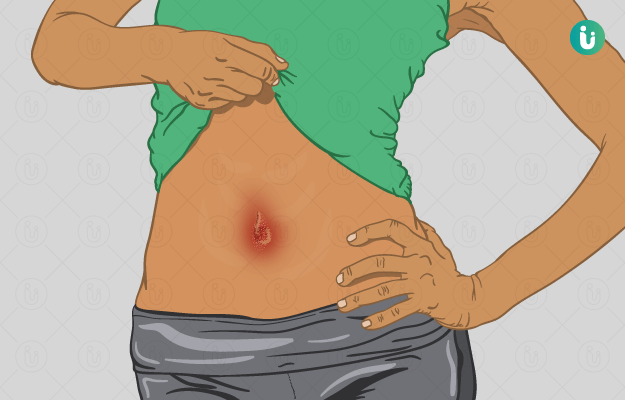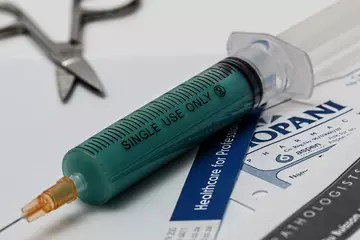What is a belly button infection?
A belly button infection is an infection caused due to the growth of bacteria or fungi in the naval; usually, as a result of poor hygiene.
What are its main signs and symptoms?
The symptoms of a belly button infection can be as follows:
- Discharge from the infected area.
- Rashes and redness in the naval area.
- Itching.
- Flaking skin.
- Crusting of skin on the belly button.
- Foul odour.
- Presence of cysts in the belly button.
- Pain in the belly button area.
- Tenderness in the belly button.
What are its causes?
Belly button infection can be caused due to bacterial and fungal growth. Poor hygiene allows the bacteria present in the naval area to grow rapidly and result in an infection. This infection is most commonly triggered by a belly button piercing or an injury. Hence, the open wound in case of a piercing is a risk factor for developing a belly button infection.
People suffering from diabetes are also at a higher risk of having a belly button infection since a high level of blood sugar promotes fungal and bacterial growth.
How is it diagnosed and treated?
The diagnosis of a belly button infection is usually done by a thorough physical exam by the doctor. However, to further investigate the causes, the doctor may take a sample of the skin around the area or of the discharge from the belly button to confirm the infection.
The doctor may prescribe antifungal creams or ointments to treat the area. Diet changes, which include lowered consumption of sugar, may also be recommended to assist the healing process. To aid the healing process, the infected area must be kept dry and clean at all times. For those with diabetes, it is essential to bring blood sugar levels under control to alleviate the current infection and prevent recurrence in the future.

 Doctors for Belly Button Infection
Doctors for Belly Button Infection 

















